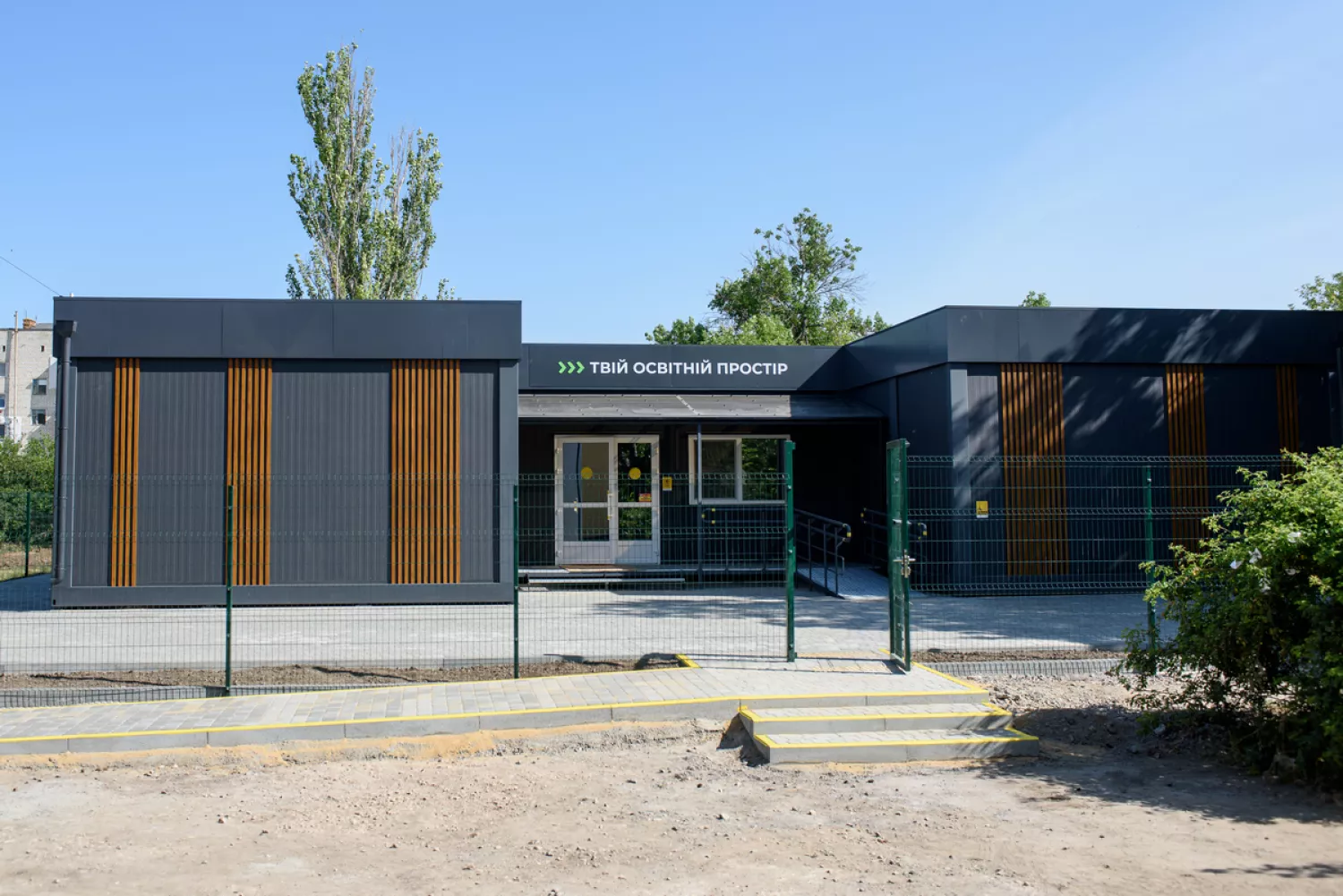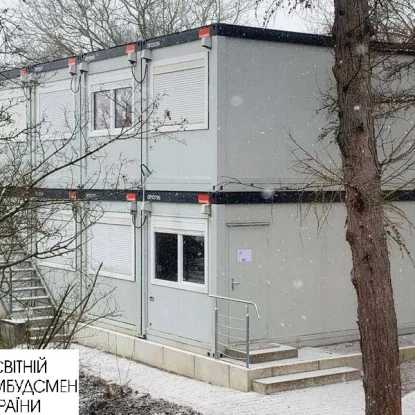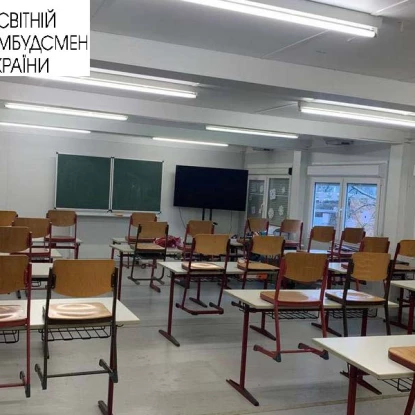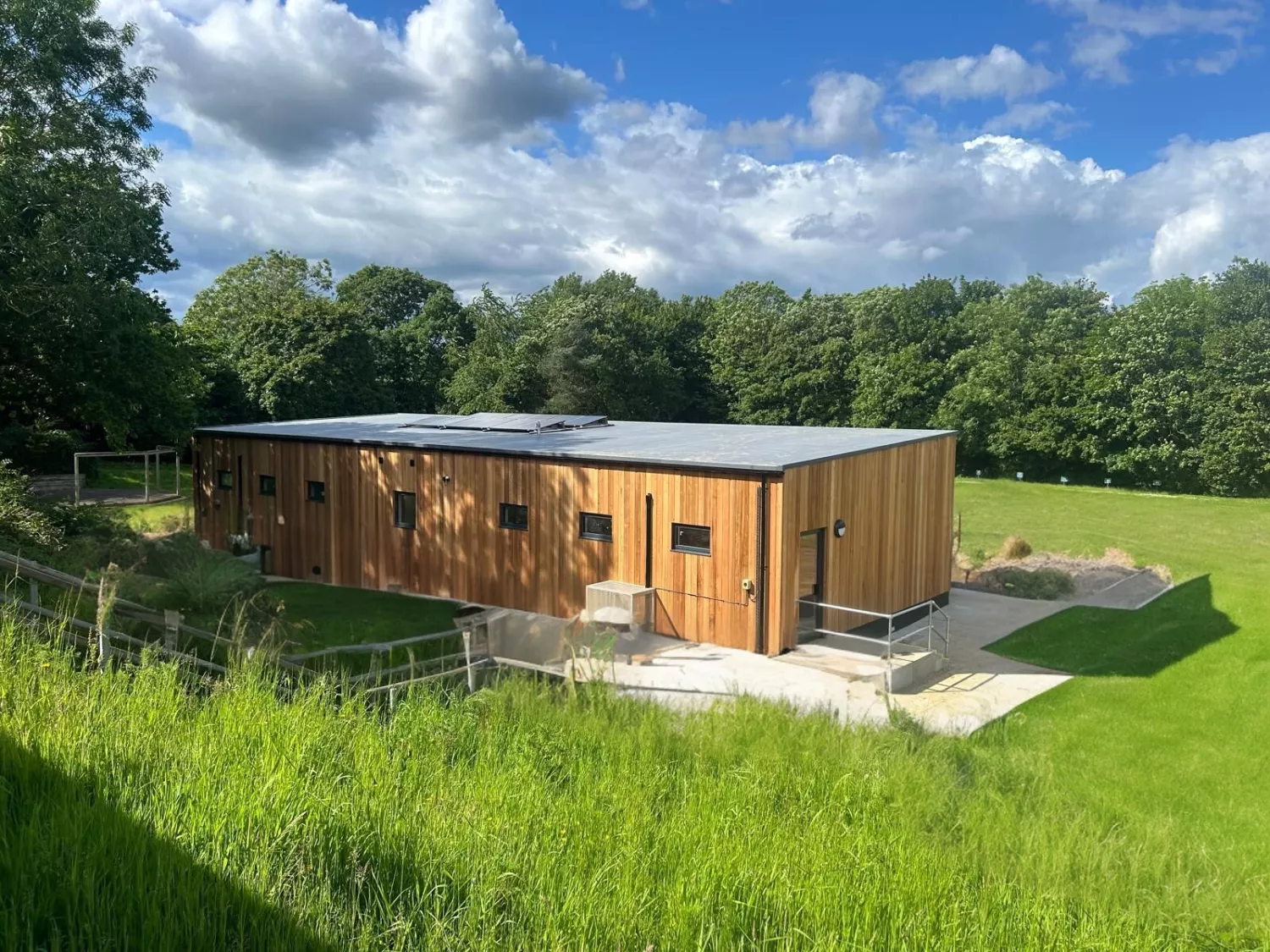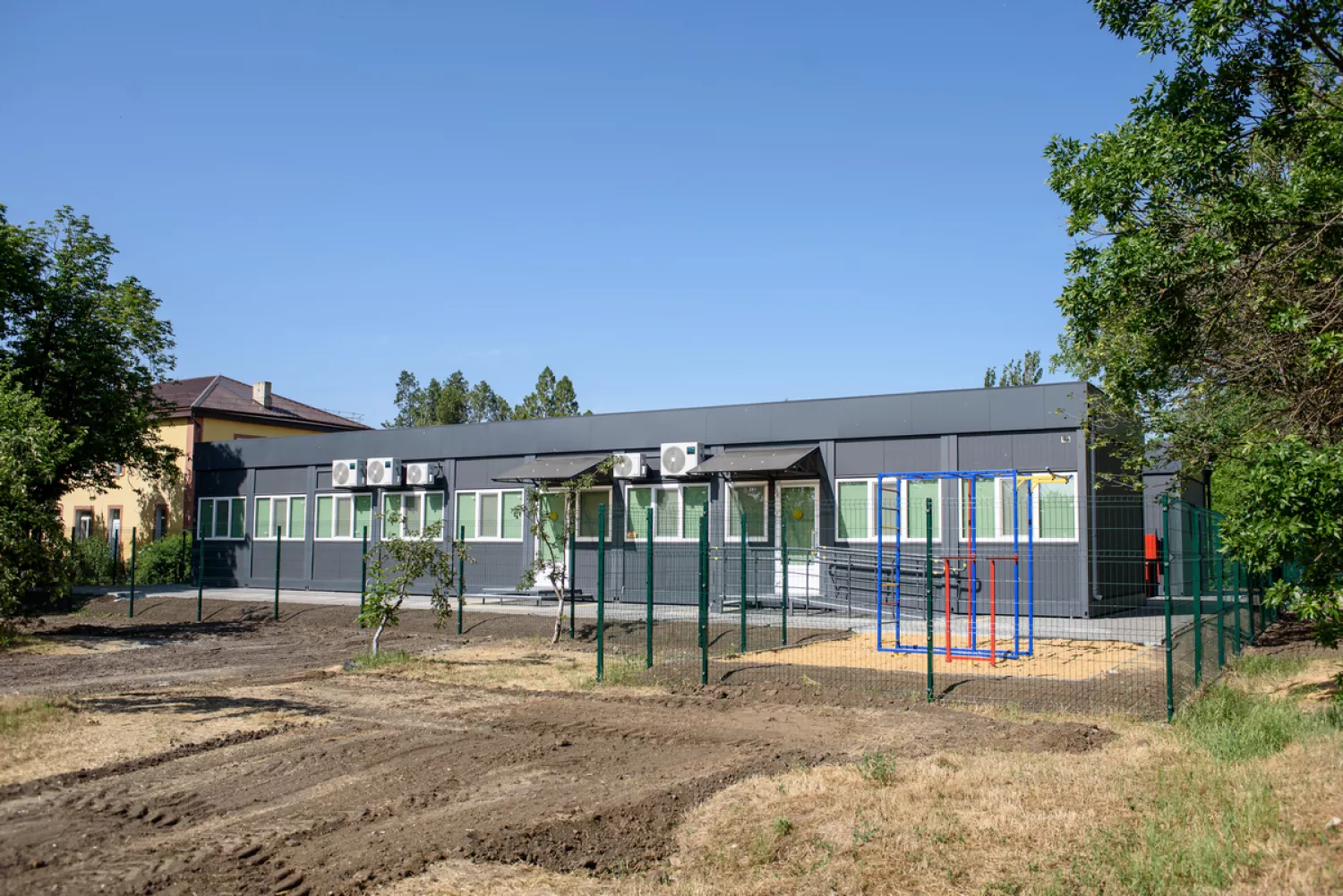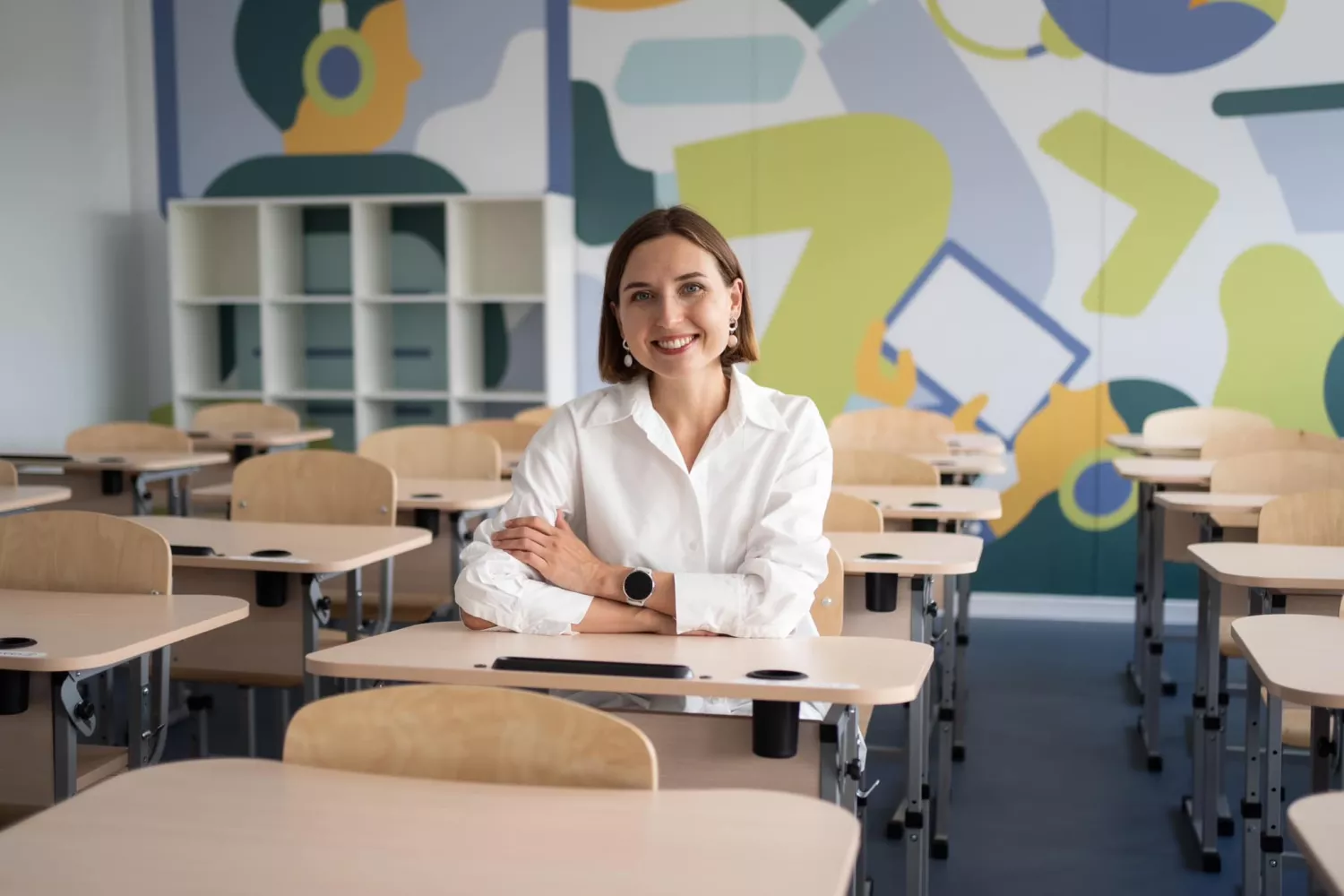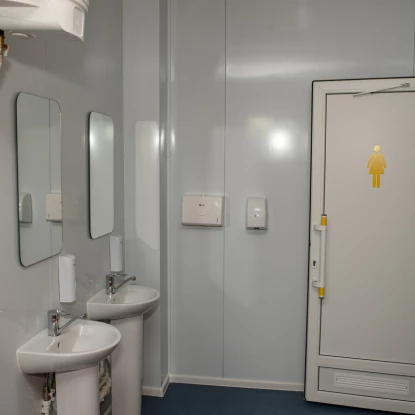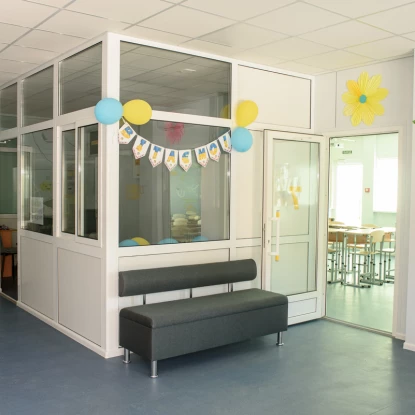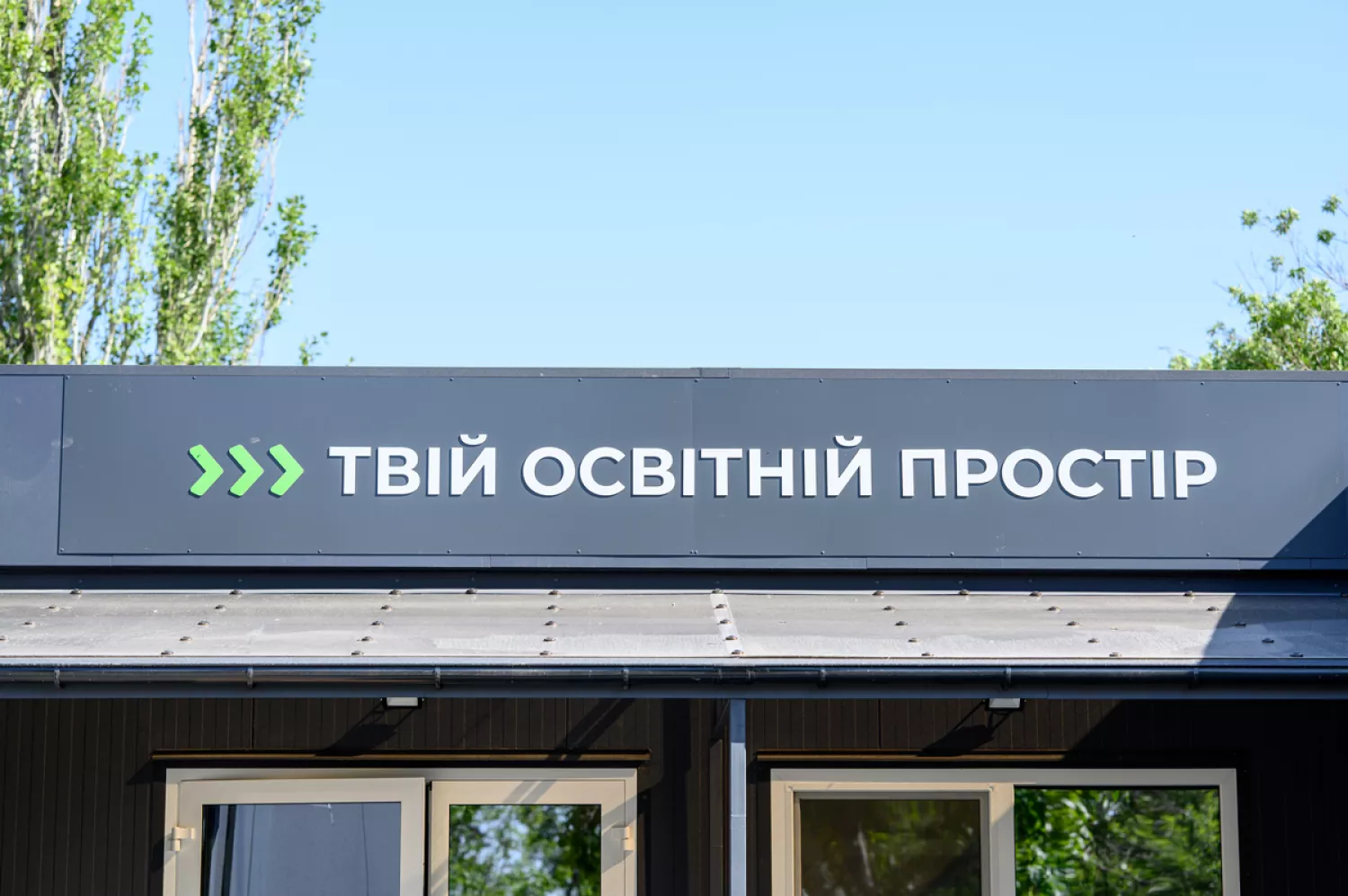Education despite the ruins: how modular schools work in Mykolaiv region
- Alona Kokhanchuk
-
•
-
10:15, 29 August, 2025
There are only a few days left before children return to their school desks. In the Mykolaiv region, about 35,000 students will go to school in the new academic year.
However, due to hostile shelling, not all communities are able to open their doors to students. According to the Ministry of Education and Science of Ukraine, 19 schools in Mykolaiv region have been completely destroyed and 117 damaged by hostilities since Russia's full-scale invasion of Ukraine.
In 2024, the affected communities began to use new rapid construction methods and install modular educational spaces. Read how it works and how children can study again despite the war in the article NikVesti.
What is modular school construction?
Due to a lack of time, money and resources, the restoration of school buildings is slow. In such circumstances, one of the solutions is to use modular buildings, which are already being used in many countries around the world.
The outer walls of such structures are made of sandwich panels lined with a metal profile with a polymer coating. Usually, the buildings are customised to meet the needs of the customer with the necessary equipment for water and electricity supply, drainage, ventilation, fire safety, lighting and heating. The modular parts are assembled off-site and then transported to the site for installation.
Modular schools have already proven their effectiveness in many countries. The Office of the Education Ombudsman emphasises that Ukraine should adopt the best practices of European countries, including Germany, the UK, Belgium, France, and others.
For example, Germany has clear guidelines for the construction of school buildings. They were created by experts to help schools, architects, and local authorities better plan learning spaces and investments. These guidelines describe how to design and build schools properly. Modular and temporary schools are built by licensed companies. They can either build new buildings or rent out ready-made blocks.
A temporary school was set up for Ukrainian children in Baden-Württemberg (a federal state in southwestern Germany). One classroom consists of five blocks that already have heating, light, windows and everything else you need. The younger children study on the ground floor, the older ones on the second floor.
In the UK, modular buildings are actively used to expand school facilities, as the need for new classrooms is growing. Construction companies offer government customers comprehensive contracts for the design and construction of such facilities.
Four modular schools have already started operating in Mykolaiv region
In the de-occupied territories of Mykolaiv region, which have been heavily affected by shelling and attacks by Russian troops, many students are unable to attend school in person. Educational facilities have been destroyed or damaged, and their restoration requires time and money.
But children need education now. Mobile educational spaces have been built in these communities to enable students to return to school. The initiative was implemented by the savED charitable foundation in partnership with IREX and with funding from US taxpayers and USAID.
According to SavED, six modular educational spaces were created in Kyiv, Dnipro, and Mykolaiv regions in 2024-2025. In total, the project envisaged the construction of 20 schools, but after USAID funding was cut off, it could not be fully completed.
Four educational spaces were installed in Mykolaiv region:
- in the village of Chervona Dolyna (Shyroke community) — for 300 children,
- in the village of Zelenyi Hai (Shevchenkove community) — for 180 pupils,
- in the village of Pervomaiske (Pervomaiske community) — for 250 schoolchildren, who will sit at their desks offline for the first time from 1 September,
- in the village of Shevchenkove (Shevchenkove community) — for 300 students who are also returning to full-time education.
Hanna Novosad, co-founder of the savED charitable foundation, told NikVesti that the main criteria for selecting communities were: the need for educational premises, the ability to conduct training offline or in a mixed format, and the availability of ready-made shelters.
«The reason why there are more of them in Mykolaiv region is dictated by objective factors. In particular, the criteria used in the selection process. First of all, it is the need of the community to have a restored educational space due to the consequences of hostilities, occupation, destruction, etc. Unfortunately, in the Mykolaiv region, where the battle line was located, many educational institutions were destroyed. This need has been and remains very relevant», says Hanna Novosad.
The co-founder of the savED charity foundation emphasises that modular school construction saves time and resources. The designs include four or six classrooms, depending on the number of students in the community. There is also a server room, autonomous heating, ventilation and power supply systems inside. In addition to the necessary furniture, the spaces are equipped with tablets and interactive multimedia panels.
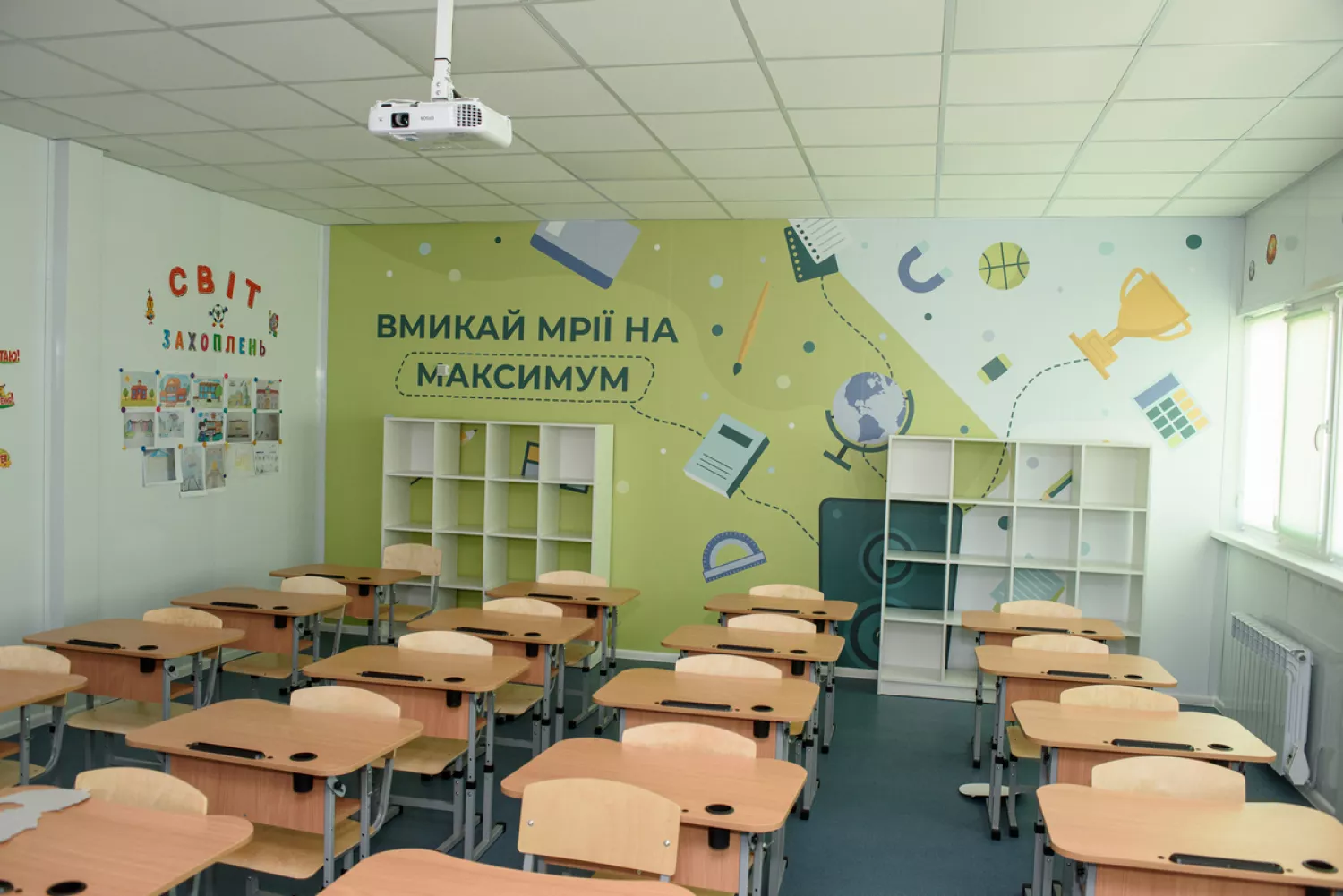 The classrooms of the educational spaces are equipped with everything you need. Modular educational space in Mykolaiv region. Photo by the savED charitable foundation
The classrooms of the educational spaces are equipped with everything you need. Modular educational space in Mykolaiv region. Photo by the savED charitable foundationAccording to Hanna Novosad, the construction of one modular educational space for six classes with all the content costs about $450,000. The production of the structures takes two months, and it takes a month and a half to install and put them into operation. In Ukraine, they were manufactured by a company from Dnipro, which was selected on a competitive basis.
«Two types were provided for in this project — for four classrooms with 25 students each and for six classrooms. There is also a small teacher's room, technical rooms and a fairly spacious corridor. There were two types, depending on which settlement we chose and which was agreed upon by our partner to support», says Hanna Novosad.
According to Hanna Novosad, co-founder of the savED charity foundation, modular structures are often associated with temporary structures on construction sites or with temporary camps with unacceptable conditions. However, this is a misconception. She notes that these are actually modern solutions designed for long-term use, as such structures can function effectively for up to 50 years.
Experience of the Shevchenkove community in using modular schools
Since the beginning of the full-scale invasion, the Shevchenkove community has been on the front line, and part of the territory has been under occupation for more than eight months. In total, about 80% of the housing stock in the villages of the community was damaged, and the same amount of critical infrastructure was damaged.
To restore access to education for children as quickly as possible, two modular schools were set up in the community, in the villages of Shevchenkove and Zelenyi Hai.
It was in Zelenyi Hai that an enemy missile hit the school building on 13 March 2022. After the shelling, only ruins remained on the site of the renovated and well-maintained buildings. Local residents, including village head Mykola Strutynskyi and school principal Oleksandr Hnedko, were killed in the rubble.
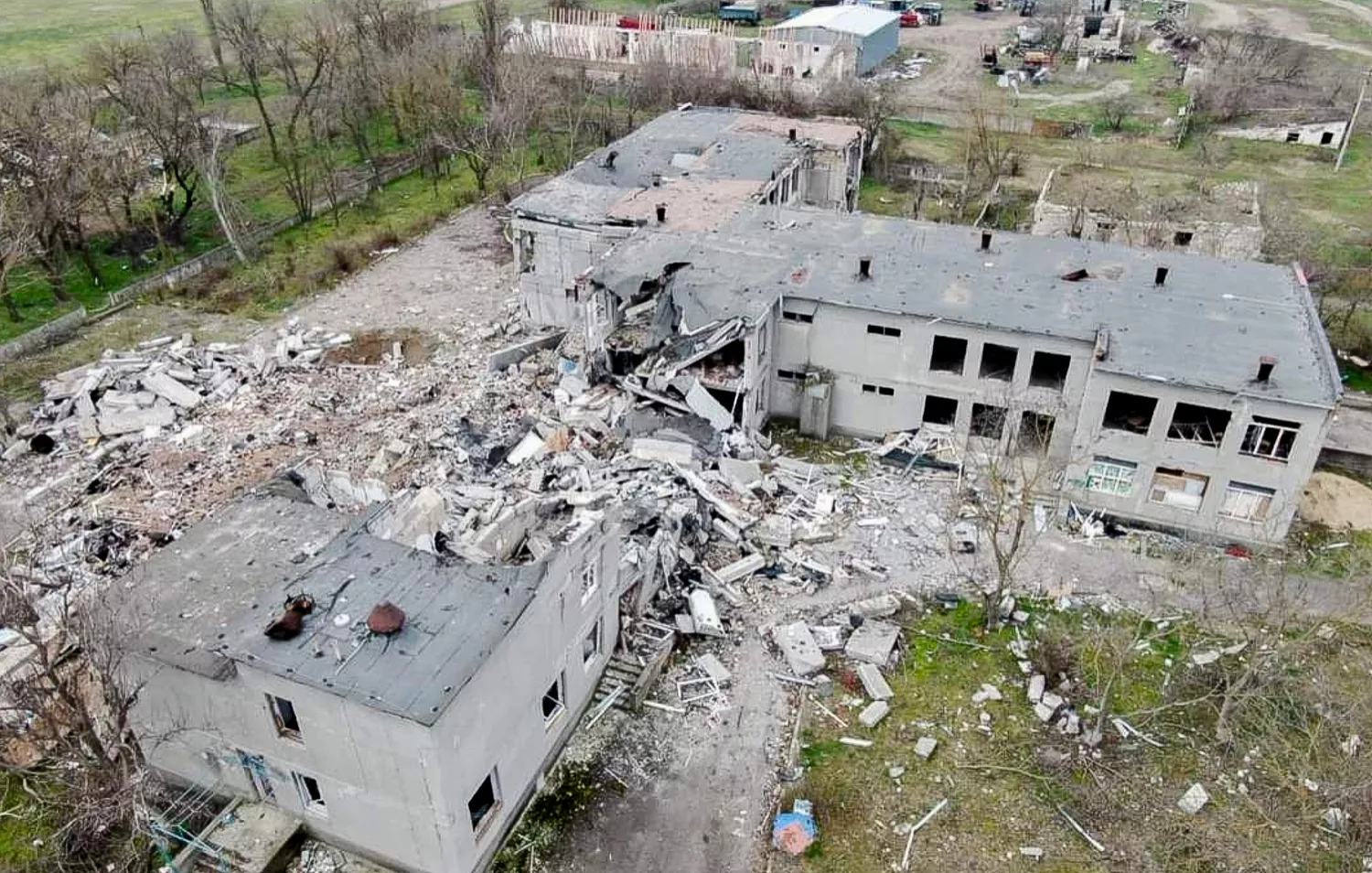 The destroyed school in the village of Zelenyi Hai in the Shevchenkove community, photo: National Police
The destroyed school in the village of Zelenyi Hai in the Shevchenkove community, photo: National PoliceAfter the de-occupation, 90% of residents returned to Zelenyi Hai, but their children were forced to study online. The local school is planned to be rebuilt, but for now, students can attend a modular educational space.
According to Hanna Novosad, the experience of operating modular schools is positive and students feel comfortable studying there.
«I personally visited Chervona Dolyna and Zelenyi Hai 8-9 months after the opening, after winter. There were no problems with the temperature. It was neither cold nor hot. There was enough air. For almost a year of work, we did not see that the structures were worn out or anything broken. Of course, the hromadas use them carefully, but the materials and structures themselves are made quite well. The presence of air conditioning, good ventilation, generators, and good toilets all contribute to the results», says Hanna Novosad.
Will the school in Zelenyi Hai be rebuilt?
In Zelenyi Hai, alongside the teaching of children in the modular school, the development of a project to rebuild the main school has already begun. As reported by the Ministry of Education and Science of Ukraine, the project worth 2 million 700 thousand euros will be funded by the Lithuanian Development Cooperation and Humanitarian Aid Fund together with Taiwan.
The building will also be restored using the modular construction method, which will reduce waste, speed up the installation process and make the school adaptable to future needs. In addition to the building itself, a shelter will also be arranged.
Oleh Pylypenko, head of the Shevchenkove community, told NikVesti that design work is currently underway, which has taken longer than planned. According to him, at first they wanted to adapt the old shelter, which had withstood the shelling, but a survey showed that a new one needed to be built.
«Funds were allocated in 2024 to build this school. Currently, it is 2.7 million euros. The design of the new school and the preparation of design and estimate documentation are underway. When the design is completed, construction will begin. In general, the design should have been completed by now, but there were certain reasons. The design will probably be completed in October and construction will begin in 2026. Initially, we planned to use the shelter that was in the old school, as it had withstood an air strike. But then we conducted a number of studies and decided to build a completely new shelter», said the community leader.
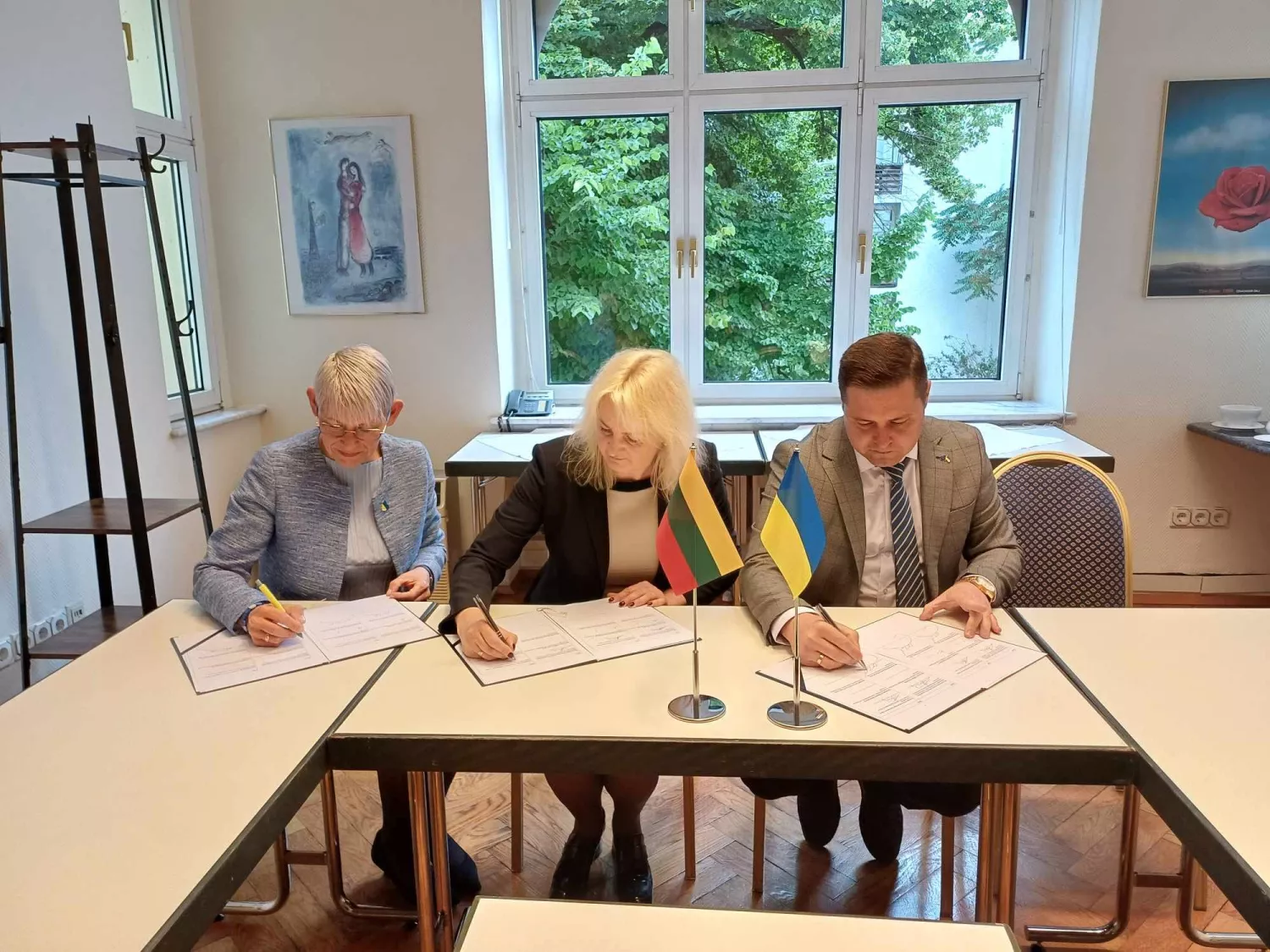 Signing of the Memorandum of Understanding to build a new school and shelter in Zelenyi Hai village.
Signing of the Memorandum of Understanding to build a new school and shelter in Zelenyi Hai village.Oleh Pylypenko notes that 2.7 million euros is not the final cost of construction. According to him, it will most likely be necessary to raise additional funding.
«At the moment, this is the amount, but we understand that it will be more when the design is done and the total cost is clear. Then it will be possible to add funds», says Oleh Pylypenko.
The modular construction system implies that the school will be energy efficient, with energy management implemented.
«We plan for our new school to be energy independent as well. This is very important and very convenient, as we don't need to pay attention to power cuts and schedules. We want our students to have this opportunity. And this opportunity will already be implemented at», says Oksana Hnedko, the head of Zelenyi Hai.
Earlier it was expected that the school would be rebuilt by the end of 2026. However, it is currently difficult to predict the timing due to the shifted design timeframe. Nevertheless, the community hopes that in the near future a modern educational institution will appear here, which will become not only a place of learning for children, but also an important centre of cultural and social life in the village.
As for the modular educational space, after the school is rebuilt, the community will be able to use it as a kindergarten, a space for creativity or an Administrative Service Centre.
«Zelenyi Hai is a good example. The construction of a school is underway, and the temporary educational space is working as an interim solution. After the school is built and launched, it is the sole right of the community to decide how they want to use this modular structure. They are obliged, according to the agreement with the partner, to use it for at least two years from the moment it is handed over for educational purposes. It's up to them to decide how to proceed,» summarises Hanna Novosad, co-founder of the savED charity foundation.
Aliona Kokhanchuk, NikVesti
